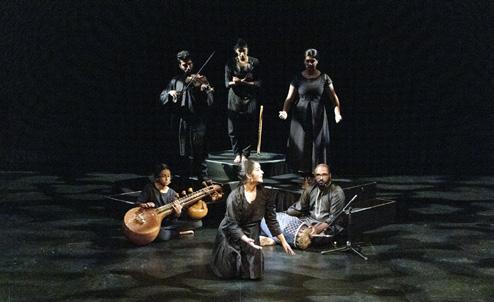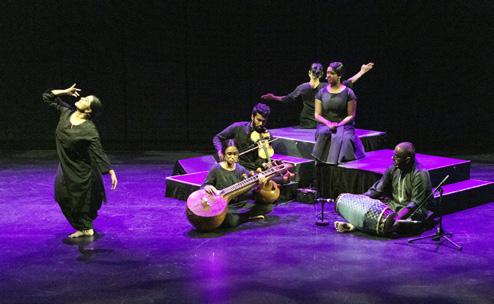
2 minute read
The flowering of talent
from 2019-08 Melbourne
by Indian Link
How two Melbourne-based artists are promoting South Asian arts
Calling for stronger cultural heterogeneity on the Australian stage, artists Priya Srinivasan and Hari Sivanesan presented The Flowering Tree recently, a group performance showcasing the depth of talent among South Asian migrant artists.
Held at Bunjil Place, a vibrant entertainment precinct in the city of Casey, the free event attracted a packed audience.
According to Hari Sivanesan, acclaimed Veena artist and passionate musician currently residing in Melbourne, the cultural and linguistic diversity present on Australian streets is hardly mirrored on our local screens and stage.
“South Asians performing arts in Australia have moved from the mainstream audiences and venues where they once were in the ‘80s to multiple pockets of community events,” he said. “The generation of Australian South Asians who have learnt their art here in Melbourne are at a crossroads with if, why and how to professionalise their practice of these arts.”
Along with renowned dancer, choreographer and writer Priya Srinivasan, Hari has collaborated with Bunjil Place in directing and curating a series of programs running from July to September supporting South Asian arts.
Most recently, seven emerging artists from multiple artistic fields launched the South Asian Arts Pathways series with an incredibly expressive group performance aptly named The Flowering Tree


A culmination of efforts over two months of preparations and workshops ensured a remarkably nuanced performance. With extensive skills over various disciplines
Kirthana, Maiyuren Priya, Sumana, Thabo, Vishwethaa and Vivek came together to bring an unforgettable story.
With a fusion of traditional and experimental art forms, the performers focused on their core discipline, extended their boundaries and creative sparks flew everywhere.
Priya who worked tirelessly to co-direct the performance with Hari remarked later that she was pleased with the event and the high level of professionalism shown by the artists. “The effects, staging, lights and venue added to the overall appeal of the story and the artists did full justice to the concept,” she said. She felt elated that the classical was not sacrificed to offer contemporary expression.
Priya and Hari both have a lifetime commitment to art that has led to their careers as full-time artists. Despite facing barriers and exclusions they have participated in cultural life in ways that affirm their attachment to their field and enrich their intellectual sensibilities. Hari grew up in the UK on the cusp of new opportunities for South Asian arts and enjoyed success as a performing artist. After moving to Melbourne he was shocked to find the lack of inclusion on the Australian main stage and the dearth of opportunities and funding. He decided to address that imbalance to ensure new generations of artists are better supported.
Priya was trained in the classical and contemporary Indian and Asian arts and performed extensively in Australia and Asia as a professional dancer with the Bharatam Dance Company. With a PhD in Performance Studies from Northwestern University, Priya is the author of Sweating Saris: Indian Dance as Transnational Labour, a work which looks at the connection between decolonisation, citizenship, immigration and dance.
Both felt that their aims aligned with that of Bunjil Place in communicating arts and aesthetics, reaching a wide range of community though intercultural engagements promoting passionate artists and creating purposeful work.
In collaboration with Bunjil Place they recently also presented Inside/Out, a duet between musician and dancer that explored the complex ways in which identity is formed, reshaped, multiplied or fragmented. Through this unique performance Hari and Priya navigated ideas of migration and the social and cultural implications of displacement that spans across geographies and time.
In September they are scheduled to present Long Pasts, Possible Futures of South Asian Australian Art, a debate that will consider the history of South Asian art in mainstream and community settings for the last 40 years and explore its future in Melbourne.
Given Melbourne’s significant population of South Asian performing arts schools and emerging artists, the event will ask what is at stake, how can South Asian arts be funded and supported, and what the roles of community, government and the private sector are. The events are presented as part of the ‘Continental Shift: Contemporary Art and South Asia’ exhibition.
Preeti Jabbal








